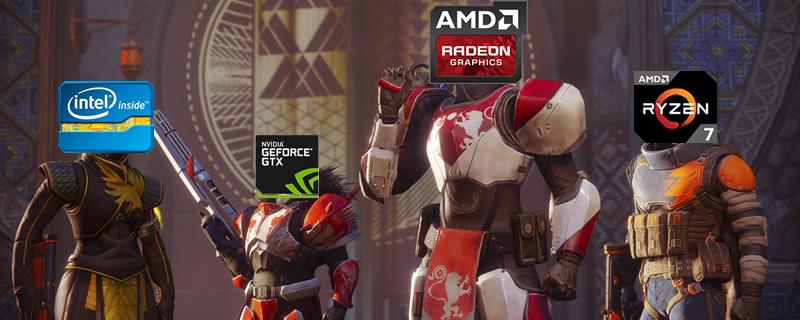Destiny 2 PC Performance Review
Conclusion
Even before the game’s official launch, PC has been heralded as the best platform to play Destiny 2, acting as the only platform that can play the game at 60 FPS (or higher) framerates and with the precision controls that can only be provided with a keyboard and mouse setup.Â
As an MMO-like FPS, Destiny has always seemed perfect for the PC platform, the home of the MMO, and the game’s performance on consoles only works to solidify the PC version as the most appealing, with higher framerates making movements feel more responsive and visuals appear smoother. This is very important given how fast-paced Destiny 2 can be.Â
The big question coming into this game was how easy will it be to run Destiny 2 at 60FPS, especially given the game’s 30FPS lock on “enhanced” consoles like the PS4 Pro and Xbox One X. The answer to this question is simple, YES. It is fairly easy to run this game at a steady 60FPS, especially on modern hardware. Sadly in-game cutscenes are limited to just 30FPS on PC, though this is a small sacrifice in the grand scheme of things.Â
What we need to stress here is that our test scenario for Destiny 2 was from one of the most stressful areas in the game that we could find, a scene that hammered both our CPUs and GPUs hard. This is to ensure that our testing applies to the most demanding areas that Destiny 2 has to offer, allowing our performance result so to aid our readers when optimising their in-game settings for these challenging areas.
Having played Destiny 2 for the past few days on PC it is clear that this PC version is no half-arsed port of the console release, offering highly scalable graphical settings that go above and beyond what we can see on the Xbox One, PS4 and PS4 Pro, especially when it comes to draw distances.
Destiny 2 offers a high level of scalability, allowing users to easily adjust the game to best suit their systems, be it those who want to run on top of the range modern hardware to those who want to scale the game back to run on their ageing machine.
When compared to the beta version several bug bares have been fixed, like the game’s Highest preset running badly on Radeon GPUs, though at this time it is unknown whether or not this was fixed with AMD’s latest drivers of by Bungie directly, either way, it is great to see that this issue has been resolved.
The only real problem that the PC version possesses is that the game has a lot of visible aliasing on PC and neither the game’s SMAA or FXAA options are able to properly handle it, even at ultra-high resolutions like 4K. This is why it is disappointing to see MSAA disappear from the game’s graphical options, though it looks like Bungie were unable to fix the bugs that were present with that settings, so in many ways it is good that it is gone.
At 1440p and 1080p all of the GPUs that we tested were able to run the game with steady 60 FPS framerates, provided users spend enough time tinkering with the game’s available graphical options. Even users of older GPUs like the GTX 960 and R9 380 are able to get a solid 60FPS experience here at 1080p, which isn’t bad considering the fact that the console version is designed to run at 30 FPS.
On the CPU side, Destiny 2 performs fairly well, with our benchmark run playing at over 60FPS in all test cases, apart from our dual-core, quad-thread (Intel i3-like) configuration, which only dropped to 57FPS. We can see that the game does like to utilise 4 or more CPU cores, though moving beyond 4-cores yields fairly minor performance benefits. We also came across issues when Hyperthreading is used, which is strange given the fact that the issue seems to have been fixed on Ryzen since the beta was released, though both quad-core setups played the game at well over 60FPS, so it isn’t a major problem.
The only big negative point for Destiny 2, aside from its AA problems, is its lack of support for performance overlays, with the game preventing applications like MSI Afterburner, Rivatuner and FRAPs from functioning correctly. Thankfully the game does support AMD Radeon ReLive and Nvidia’s GeForce Experience, with the game also coming with its own built-in FPS overlay (which has been fixed since the beta) in the game’s graphical options menu. Bungie says this is to help prevent cheating in Destiny 2, though this can be difficult to swallow for some, given the fact that most eSports games haven’t cracked down on visual overlays. Â
In all, Destiny 2’s PC version is a great showcase of what Bungie is capable. The PC version of the game is the only version that can run at 60FPS, giving what can easily be described as the definitive way to play Destiny 2. Moving back to 30FPS gameplay in Destiny 2 is an immediate smack to the teeth for players, with the faster controller response and the smoother gameplay provided by a faster framerate providing a much more enjoyable experience given the often fast-paced nature of Destiny. Â
You can join the discussion on Destiny 2’s PC performance on the OC3D Forums.Â



